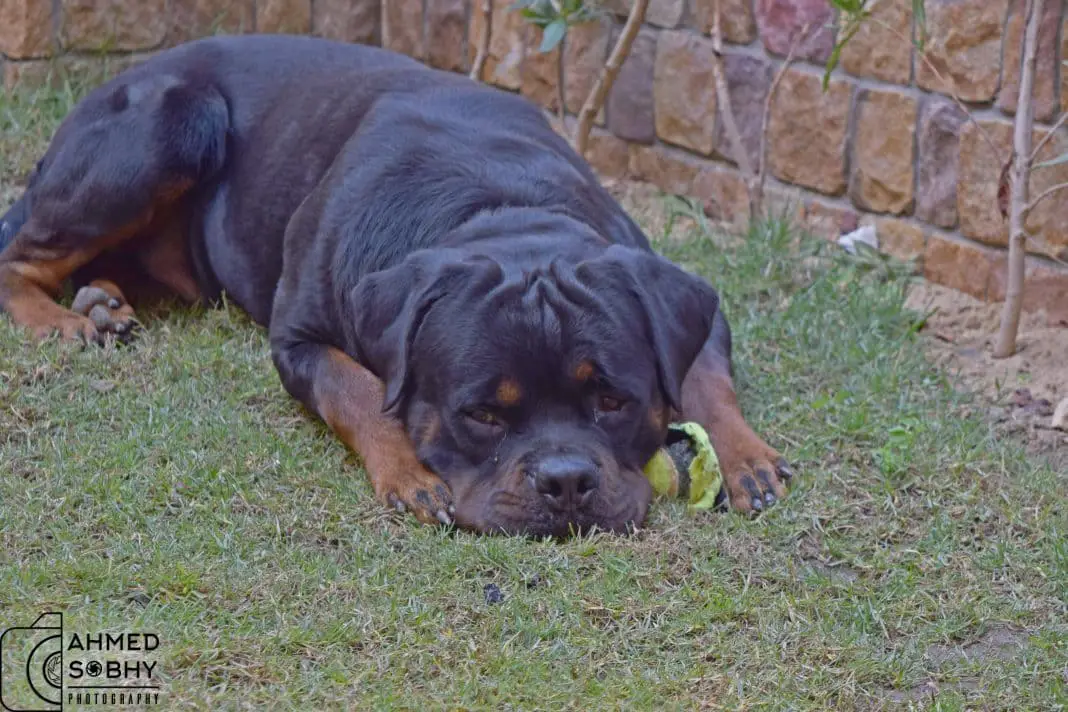Did you get a Rottweiler and are not sure how to train it? Or do you have a Rottweiler with some questionable behaviors? You have come to the right place! Read this article to discover some simple and easy tips to help train your Rottweiler to be your very best friend.
When crate training a puppy, try to make your puppy feel like the crate is his home. Meal times should be given within the crate while the door remains open throughout the meal. They’ll build a positive view of the crate this way.
It is important that you also train your Rottweiler at mealtime with a specific routine. A predictable feeding schedule and removing the food promptly will teach them to eat their food quickly. Your Rottweiler will eat their food in the time that you have alloted.
With patience and a handful of tasty treats, you can easily teach your pet to roll over. The first step is to get the Rottweiler to lay down. Then hold the treat at the side of the Rottweiler’s head and move it around it’s face to the other side. They’ll follow your treat with their nose which will cause them to roll over. Whenever your Rottweiler does actually roll over, say “roll over” out loud. Repeating this over time forms a mental association in your Rottweiler’s mind that eventually causes him to roll over on command. It will take some work, but keep on trying!
Always be ready with Rottweiler treats. The reward is a great way to teach your Rottweiler that he has performed a task that you wanted him to do. This is the proper way to make sure the Rottweiler knows the difference between good behavior and bad.
Limit the duration of training sessions. You will bore your Rottweiler if your spend a lot of time on just one thing. This is why you need to limit the time of your training sessions to around 10 minutes.
Make sure you are having fun when you are training your Rottweiler each day. The two of you playing together will help build a strong bond, and that will encourage your Rottweiler to positively respond to the training. Training can be pretty fun, but make sure you get plenty of non-training play in too.
Always use positive reinforcement to train your Rottweiler. If you are happy with your Rottweiler, give him pets, happy words and the occasional treat. Never punish your Rottweiler with words or your hands. This never works, and your Rottweiler will sense that you are cluelss. Maintain a calm attitude anytime that your Rottweiler does wrong so that you can have a relationship o mutual respect with your Rottweiler.
Reduce as many accidents as possible when you’re toilet training your Rottweiler. Learn to recognize what your Rottweiler does when he needs to go out. If your Rottweiler is pacing or whining, you need to take them outside. When you see this, don’t delay. Immediately pick up the leash and go outside to a preferred spot. When he does go, praise him! Soon, he’ll get the picture that he can ask to go outside.
When training a Rottweiler, watch that you do not overdo giving the Rottweiler treats. Too many treats can really plump a Rottweiler up. You can’t ignore the calories that treats contain, though many individuals do.
To teach a young Rottweiler to behave while walking on a leash, start by initiating some good-natured playing. As you play, you can then place the collar on his neck. It is important for the puppy to get used to the collar so it can be identified.
It’s very important to never try to quickly stop a bad behavior by provide a reward. This only makes the Rottweiler more likely to do those bad things again. For example, this occurs when you give a Rottweiler a treat every time it makes loud noises.
How certain are you that your pet is getting adequate nutrition in its diet? Like children, Rottweilers can become hyperactive, inattentive and even a little bit bratty when their diet isn’t up to par. There are specialty foods available for individual Rottweiler breeds. You can try one of these if your Rottweiler’s energy seems low. Talk to your vet to learn the nutritional needs of your Rottweiler.
One very good way to reinforce a desired behavior in a rottweiler is by providing a treat after the behavior is successfully performed. After they learn it, reduce giving them treats to 75% and continue reducing it to getting one just every once in a while.
Pay attention to the Rottweiler’s signs so that accidents indoors do not occur. Most Rottweilers go through a serious of behaviors when they need to go to the bathroom. When you are clearly attuned to these signals, you should demonstrate the appropriate course of action by immediately leading him to the designated area. Understanding the Rottweiler’s natural disposition helps make house training simpler for everyone involved.
Make sure your Rottweiler’s check ups are current. If you see that your Rottweiler has trouble with certain parts of training, or you notice that he has started to backslide, be sure his health is good. Sometimes, Rottweilers will mask discomfort, making it hard for you to tell how they are feeling. It is important that you pay attention to your Rottweilers behavior on a daily basis as it may be your only sign of illness. For instance, sudden aggression in an otherwise docile Rottweiler can indicate that he is in pain.
If a Rottweiler experiences separation anxiety, it should get experience being around others. By forming healthy relationships with other people, the Rottweiler will be more likely to cease its unhealthy dependence on you.
With everything you’ve learned about training your Rottweiler, why would you delay it any further? These trips will help you keep your Rottweiler obedient. Rottweilers love to please and want to follow your commands. They just need a firm hand to show them the way. Give it a go!


